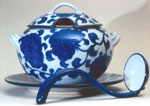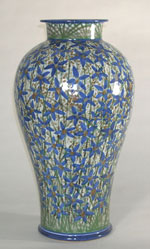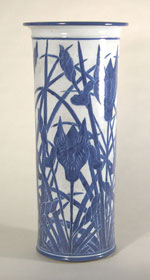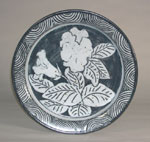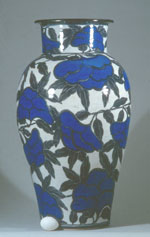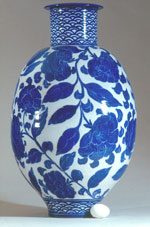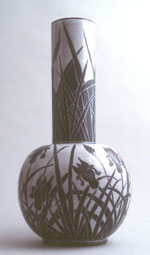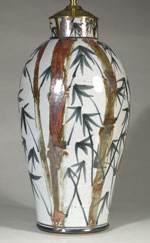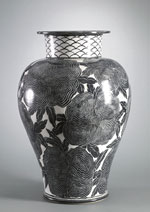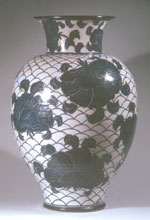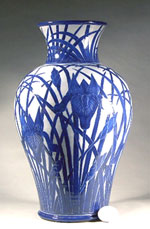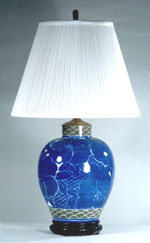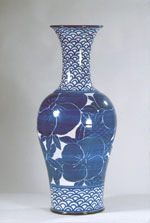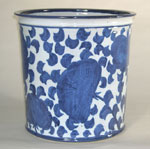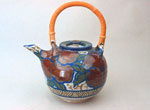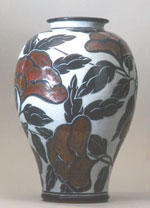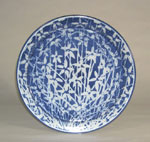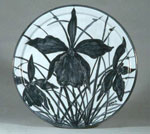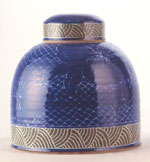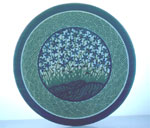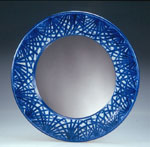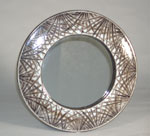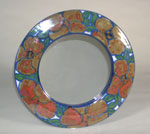All the designs are completely hand done. No stamps or stencils were used. All the pieces were made by hand, not cast, nor from a mold. Therefore, each piece even of the same pattern and item, are one of a kind.
The larger pieces are sectional: usually two sections with the neck added as a third section. Each of the sections is thrown and shaped after they have been put together including the neck. That makes it very difficult to easily detect the seams of the different sections.
Unless otherwise stated, all the floral design pieces are reduction stoneware fired to cone 11 (almost 2400 degrees fahrenheit). Reduction is when smoke is introduced during the firing, in particular, at lower temperature (1800 degreesF) to color the clay body of the piece and at the late stages to add color to the glaze. For our firing, we achieve this by cutting back on the oxygen to the gas burners.
The base gray white glaze we use is a really a clear glaze that becomes opague when applied very thickly. If the glaze is too thick, the glaze can "crawl", or separate from the body of the piece. There have been many a beautiful piece lost because of crawling. We have occasionally had pieces that came out where a whole section slipped with the design still intact. It has become a matter of feel to get the right thickness. For Sherrie to "etch" (sgrafitto) a piece the glaze must be thick enough so that she does not scratch all the way the bare surface. It takes a delicate touch.
All the decoration is done on top of the base glaze using metallic oxide slips. On the Edo page, you can see a picture of Sherrie brushing on the Iris design on a cylinder . The dry glazed surface of each pieces has to be scraped smooth with the dust removed and any pinohles filled before Sherrie begins her brushwork.
The designs can be easily damaged loading pieces, or just moving them. They are really just a dry powder on top of the glaze similar to chalk on a chalk board. We have had pieces come out with a fingerprint in the middle of a flower fired on forever. The slightest contact can smudge the design. Any trace of cobalt oxide (used to make our blue) left on your fingers often shows up later in a white area on the pieces.
The Wax Resist pieces are similar to batik. Wax is applied to prevent the oxide from filling in the pattern. When the oxide melts in firing the pattern is left behind. A little "freckling" of oxide shows in the finished pattern.
The work on all the pages have been created over a number of years and are in no particular chronological order. We have no record of at all, except our memory, of several of the designs Sherrie created. Many were one of a kind pieces. We will be adding more pieces to all Carris Pottery pages over time. It is unknown if there will be any more of the floral pieces made. Optimistically, there may be one or two more kiln loads. Consequently, we no longer take orders. You contact us with requests, but no guarantees.
Carris Studio
(865) 483-7167
sherrie@artmuseumtouring.com
